Cork University Hospital Emergency Department manages the HSE National 24 hour Emergency Telemedical Support Unit, which provides telemedical support to vessels in Irish territorial waters, the National Ambulance Service and Dublin Fire Brigade, writes Dr. Jason van der Velde, Clinical Lead for the service.
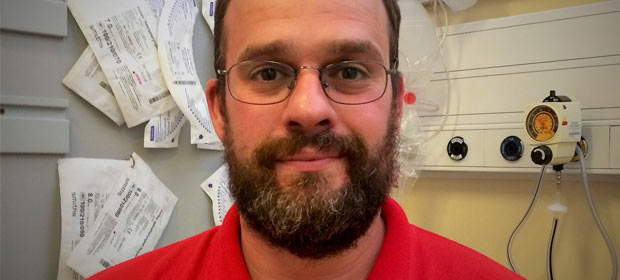
Cork University Hospital Emergency Department manages the Irish Health Service Executives (HSE) National 24 hour Emergency Telemedical Support Unit. MEDICO Cork guarantees direct access to advice from an Emergency Medicine Registrar or Consultant through various Service Level Agreements (SLAs) with a range of end-users.
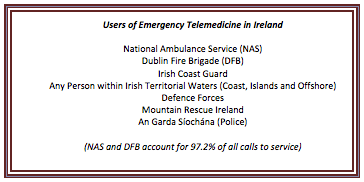
An SLA has existed between the Irish Health Service Executive (HSE) and the Irish Coast Guard (IRCG), with support from the Irish Naval Services, since July 2001. It provides for the statutory provision of telemedical support to vessels in Irish territorial waters, required for Ireland to comply with its legal responsibility towards workers at sea under European Council Directive 92/29/ECC (updated via amendment 1882/2003). In addition, MEDICO Cork is part of the National Framework for Emergency Management, as included in the Multi-Agency Protocol “Land Based Response To Marine Emergences” (May 2011).
Since April 2011, HSE Standard Operations Procedures (SOPs) exist to facilitate Advanced Paramedic Telemedical Support for both the National Ambulance Service and Dublin Fire Brigade. Telemedical Support for the Emergency Services is included in the “National Emergency Medicine Programme” (June 2012).
An SLA is currently being drafted between An Garda Síochána and the HSE to facilitate a telemedical support pilot project with Mountain Rescue Ireland and Garda tactical support units. An extended SLA is currently being drafted with the Defence Forces to include additional assistance to Army and Aer Corp (Air force) personnel in carrying out their duties abroad.
Infrastructure
Calls are received either directly from users or through the various agencies control rooms, via a dedicated telephone exchange or increasingly through The National Digital Radio Service (NDRS); a secure digital mobile radio network available exclusively for the use of public safety sectors in Ireland.
A quiet telemedicine-room, free from distraction, has the ability to forward calls, conference call, access email, and access both intranet and internet based electronic resources. For research purposes, the room has live video feed capability and enhanced data-transmission through the University College Cork (UCC) Network.
Clinical Governance
I am employed full time as the Clinical Lead for the service. Prof. Stephen Cusack and the wider Consultant team at Cork University Hospital Emergency Department provide Consultant Emergency Medicine support. Individual Services’ Medical Directorates feed into this Clinical Governance Structure. Lessons learnt from Audit and research is fed back to the Prehospital Emergency Care Council (PHECC) to guide and inform debate surrounding Prehospital Clinical Practice Guideline development in Ireland.
All calls are recorded electronically and stored in a database on the HSE Network, becoming part of standard secure HSE patient records. Access to these recordings is strictly governed. Records are anonymised and routinely thematically audited to improve service delivery.
A system of feedback to staff regarding their call handling, has iteratively led to a programme of induction and Emergency Telemedical communication training for both users and providers, which focuses on human-factors and the role of cognitive bias in influencing telemedical interactions.
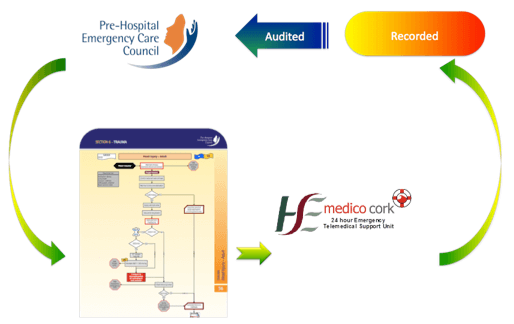
Clinical Activity:
| Year to 28th April | Number of Calls | Number of Calls per day | Yearly Activity Increase |
| 2015 | 816 | 2.24 | 75% |
| 2014 | 464 | 1.27 | 52% |
| 2013 | 306 | 0.84 | 54% |
| 2012 | 198 | 0.54 | – |
Coastguard and Naval calls account for 2-3% of yearly totals.
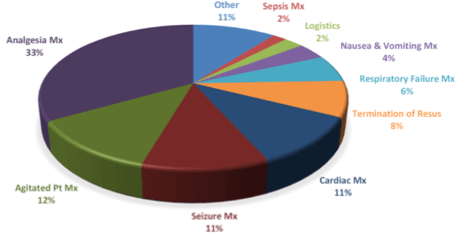
– Total 974 Calls
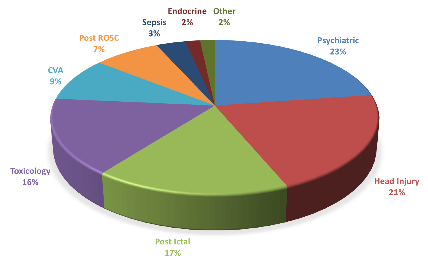
– Total 974 Calls
Managing Island Emergencies as “Ships at Sea”
Uniquely, there are 77 Islands off the cost of Ireland, with a stable population base of 2,896. The largest being Inis Mór, with 845 inhabitants. These figures obviously don’t account for seasonal or holiday seasonal flux, which can see island population sizes literally treble overnight; neither do they account for day nor cruise ship visitors which can range into the thousands.
The HSE’s National Ambulance Service (NAS) approaches islands as if they were ships at sea. The 999/112 calls originating from Islands get received by NAS control, but then handed over for initial response and subsequent retrieval of the patient to the mainland, to the Irish Coast Guard. NAS then manages onward transfer to hospital.
The Irish Coast Guard has a number of resources at its disposal:
- An initial primary response by local Coast Guard Voluntary Teams, Lifeboats, Ferries and occasionally Naval assets. All have First Aid training.
- Search & Rescue Helicopter response. All SAR aircraft are crewed by two paramedics and equipped to exactly the same standard as NAS road ambulances, with additional equipment for critical care patient transport.
- Telemedine advice through MEDICO Cork. The Irish Coast Guard makes use of MEDICO Cork to guide decision making, particularly in adverse weather conditions or at night. Whilst Operational Risk is always at the discretion of the aircraft crew, medical risk may be assessed remotely by MEDICO Cork. In cases where helicopters are unable to fly, lifeboats are utilised in life and limb threatening conditions.

